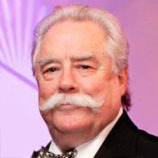
When I was 18, anyone middle-aged was bewildered with life and overly concerned with security. The exception was Marvin, my 40-year-“old” cousin. He had a taste for being alive, knew everything there was to know about riding motorcycles and finding interesting out-of-the-way places on little-used roads. Forever, he rode a Harley Panhead all over the Southwest. I listened to him.
Just back from one of his summer-long motorcycle trips, after his “welcome home” Sunday dinner my mother cooked, on two large straight-backed chairs we sat relaxing on the front porch. I anticipated a story. He lit his pipe and asked me, “Do you like home-cooked Basque food?”
This was 1964 and I didn’t know Basque food from chop suey but I pretended I did. “Sure, I like all kinds of fancy food.”
He knew I was faking but didn’t call me on it.
Marvin began, “In Bakersfield, up in the San Joaquin Valley, they raise a lot of sheep. To tend these sheep, for the last 100 years the owners have been importing Basque sheepherders, young men from the Pyrenees Mountains between Spain and France.”
Marvin lit his pipe several times as he went on and on about the history of the Basque in California, about them being the finest sheepmen in the world; how they had an uncanny ability to find the richest pastures, rarely lost lambs to predators and their ewes routinely had the most offspring.
He added, “The sheep owners paid the shepherds’ way to America and as part of their salary rewarded them with ewes. After a few years these young men amassed small herds of their own, and saving enough money they sent for their families. There is a large Basque community just east of Bakersfield. They started businesses and restaurants that serve the best food in the world.”
As he lit his pipe he looked off into the smoke which circled above his head and his story got personal. “In March I stopped at a small sheep ranch on the east side of Bakersfield, out towards the Kern River Canyon. I asked if they minded if I camped on their property; they didn’t. A few days later they gave me a job, a bed in the bunkhouse, taught me about sheep and I worked for room and board.”
Marvin then told me that he had been living with a Basque woman for the past summer, a woman he had loved like no other.
Marvin described her, “She was first-generation born in America. Her eyes were black, so black that when the sun was just right you could see your reflection as clearly as if you were looking into a mirror. Her hair was as a raven’s wing… long… silky… to her waist… every strand like midnight. Not tall, about five-foot-two but not fragile or defenseless. Somehow she was both petite and sturdy and the picture of self-reliance. I loved her the moment I saw her.”
There was a thoughtful pause and then he continued, “I met her one day in late April. The peach orchards were budding. The blossoms were so thick it was like a snowstorm had just passed over the trees and laid six inches of new fluffy flakes on each of them.”
The more Marvin revealed, the farther he got from the porch on which we sat and the closer to the sheep ranch.
Wistfully he spoke, “Esmerelda… her name was Esmeralda. Esmerelda was a friend from an adjoining ranch. She came one day for a visit and we fell in love. That was all there was to it. We saw each other and that was it. A week or so later she packed her few belongings in a backpack, got on the Harley and we headed out on our own. To stay on the road we took menial backbreaking work. We chipped bricks in Fresno, picked fruit in Madera, tended hops in Oregon. That was how I had done it in the past but it’s different when you are a couple; it’s different when you are with a woman. She never complained but a man wants better for his woman. He wants to protect her, give her things, make life easier with him than it was when she was alone. But things weren’t easier; things were harder. I knew the road wasn’t for her. Thank God Basque families are strong, tightknit and forgiving. In the fall we came back. She wanted to get married but never said a word… never asked. I don’t know nothing about being married, so I took her home and then left.”
Marvin stayed at our house that fall and helped me buy a used Harley Panhead just like his. He knew how to set up a bike for the road so that you could ride all day and laughed at the riders with extended front forks and tiny gas tanks.
“Your bike will be capable of miles from dawn to dusk.” He assumed that if I was his cousin I would want to ride and travel as he had. He was right.
For the last 120 years, if a rider wanted to escape the Los Angeles Basin to the north they were required to take the Ridge Route up the mountain, over the 4,200-foot Tejon Pass and down the Grapevine into the San Joaquin valley. The first Ridge Route was a goat path, the replacement was a four-lane death trap and now U.S. Highway 5 allows the traveler to break the speed limit and clear the mountains with ease.
At the bottom of the Grapevine, almost immediately, a rider has three major choices: Highway 166 west to Maricopa and further on to Santa Maria, Highway 5 which is the fastest straight shot up the valley to Sacramento, and old Highway 99 which goes up the valley but is much slower because it passes through every little farming town.
This morning my Harley, towing a little trailer loaded with my camping gear, slid over the Ridge Route, down the Grapevine and we picked Old 99. A savvy biker can find the best Basque food on the planet on the eastern edge of Bakersfield.
Further on, there is a small sheep ranch where Esmerelda and Marvin were married and lived. The ranch also has a tiny graveyard that shelters family members. That is where they are buried.
Whenever I ride north out of Los Angeles I always stop, put wildflowers on their graves and remind them they are not forgotten.


















